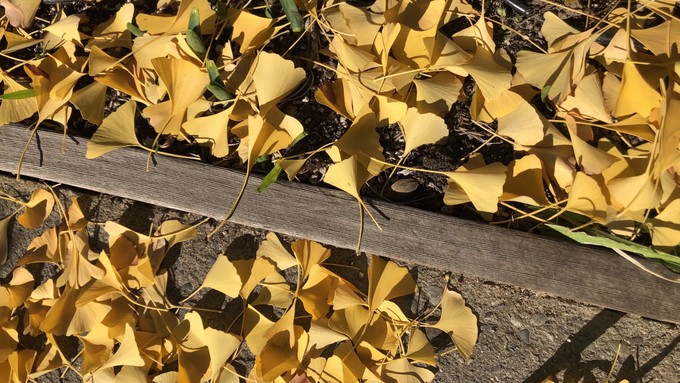
Chilly nights ahead; make most of clear days

Fallen leaves have extra benefits. You can sweep or rake them up, but leave some on the soil for mulch and in places for beneficial insects to winter under. Kathy Morrison
Keep your sweater handy – and some warm gloves, too.
Sacramento can expect another clear and chilly week, according to the National Weather Service. Daytime highs will be mostly in the low 60s before finally warming up to 66 by Thanksgiving Day. Overnight lows will dip into the 30s, flirting with frost danger.
“Near freezing temperatures are expected for the Valley and foothills through the weekend into Monday morning,” tweeted the weather service’s Sacramento office. “Don’t forget to bring your pets indoors!”
Give animals a warm, safe place to sleep, off cold floors, says the weather service.
Take care of your plants, too. Insulate new transplants with a blanket of mulch. Keep frost cloths handy for the most sensitive plants such as succulents, tropical plants and young citrus trees.
By next weekend, overnight lows are expected to warm slightly, staying above 40 degrees. Although we’ll see some clouds by midweek, no rain is in the forecast.
Stay warm by enjoying some outdoor activity, like showing your garden some TLC.
* Cold nights and gusty winds are quickly finishing off autumn foliage. Rake up fallen leaves – great for making compost. Turn some of those leaves into mulch.
* To help prevent leaf curl, apply a copper fungicide spray to peach and nectarine trees after they lose their leaves this month. Leaf curl, which shows up in the spring, is caused by a fungus that winters as spores on the limbs and around the tree in fallen leaves. Sprays are most effective now – when there’s no rain in the forecast and any wind has died down.
* Keep planting bulbs to spread out your spring bloom. Some possible suggestions: daffodils, crocuses, hyacinths, tulips, anemones and scillas.
* This is also a good time to seed wildflowers and plant such spring bloomers as sweet pea, sweet alyssum and bachelor buttons.
* Now is still a great time to plant most trees and shrubs. This gives them plenty of time for root development before spring growth. They also benefit from winter rains.
* Set out cool-weather annuals such as pansies and snapdragons.
* Lettuce, cabbage and broccoli also can be planted now.
* Plant garlic and onions.
* Give your azaleas, gardenias and camellias a boost with chelated iron.
* After they bloom, chrysanthemums should be trimmed to 6 to 8 inches above the ground. If in pots, keep the mums in their containers until next spring. Then, they can be planted in the ground, if desired, or repotted.
* Prune non-flowering trees and shrubs while dormant.
Comments
0 comments have been posted.Sacramento Digs Gardening to your inbox.
Sites We Like
Garden Checklist for week of July 21
Your garden needs you!
* Keep your vegetable garden watered, mulched and weeded. Water before 8 a.m. to reduce the chance of fungal infection and to conserve moisture.
* Feed vegetable plants bone meal, rock phosphate or other fertilizers high in phosphate to stimulate more blooms and fruiting. (But wait until daily high temperatures drop out of the 100s.)
* Don’t let tomatoes wilt or dry out completely. Give tomatoes a deep watering two to three times a week.
* Harvest vegetables promptly to encourage plants to produce more. Squash especially tends to grow rapidly in hot weather. Keep an eye on zucchini.
* Pinch back chrysanthemums for bushy plants and more flowers in September.
* Remove spent flowers from roses, daylilies and other bloomers as they finish flowering.
* Pinch off blooms from basil so the plant will grow more leaves.
* Cut back lavender after flowering to promote a second bloom.
* It's not too late to add a splash of color. Plant petunias, snapdragons, zinnias and marigolds.
* From seed, plant corn, pumpkins, radishes, winter squash and sunflowers.